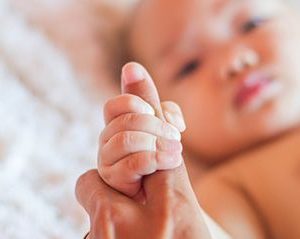- Skip Storing This Everyday Product in the Fridge Door
- Green Tea + B3 Pairing May Boost Brain Health
- Navigating Your Midlife Crisis: Embracing New Possibilities
- City Raccoons Showing Signs of Domestication
- Mapping the Exposome: Science Broadens Focus to Environmental Disease Triggers
- One Week Less on Social Media Linked to Better Mental Health
- Your Brain Changes in Stages as You Age, Study Finds
- Some Suicide Victims Show No Typical Warning Signs, Study Finds
- ByHeart Formula Faces Lawsuits After Babies Sickened With Botulism
- Switch to Vegan Diet Could Cut Your Greenhouse Gas Emissions in Half
Giving Birth During the Pandemic? Facts You Need to Know

Giving birth during the coronavirus pandemic presents its own challenges, but the American Society of Anesthesiologists (ASA) wants to reassure pregnant women that they need not panic.
Instead, they “should be comforted to know that the hospital is a very safe place to have a baby now,” said Dr. Beverly Philip, president of the ASA.
“The obstetricians, midwives, physician anesthesiologists, nurses and other health care providers who care for women in labor have been vaccinated and follow other precautions to ensure safety, such as wearing personal protective equipment,” Philip explained in a society news release.
The U.S. Centers for Disease Control and Prevention says COVID-19 vaccination is safe and recommended for pregnant women. Vaccination protects both mother and baby. Talk to your health care provider about whether the vaccine is right for you, the ASA advises.
All patients admitted to a hospital, regardless of vaccine status, are tested for COVID-19, including mothers in labor. If you’re scheduled for a cesarean delivery, you’ll be tested two to three days in advance. Your labor support partner/person will also be screened.
If you test positive, your health providers will wear extra protective equipment, and physician anesthesiologists — experts in airway control and critical care — will be closely involved in your care because COVID-19 can cause breathing issues.
Because women in labor usually breathe heavily during contractions, you’ll have to wear a mask when your health care providers are in the room with you, as will anyone who accompanies you for support.
Currently, most hospitals permit only one or two support people in the room with a woman in labor. If you test positive for COVID-19, you will not be able to bring any support people in the room with you. But health providers can help with breathing and other support during labor, and possibly arrange a live video chat with your support person.
After delivery, most new mothers leave the hospital sooner than before the pandemic: One day (versus two days) after a vaginal birth, and two or three days (versus three or four) after a cesarean delivery. You can expect health providers to follow-up with you after your release to monitor your pain and answer questions, according to the ASA.
Telemedicine can help women with high-risk pregnancies be seen regularly before they are in labor, and also connect new mothers with their health providers, the experts noted.
More information
The U.S. Centers for Disease Control and Prevention has more on COVID-19 and pregnant women.
SOURCE: American Society of Anesthesiologists, news release, April 29, 2021
Source: HealthDay
Copyright © 2025 HealthDay. All rights reserved.










